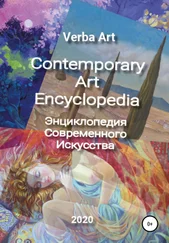On the fourth day of September, under nine degrees, we lost sight of the north star. We came to anchor three or four leagues west and by south of the Cape de Tres Puntas. Then our pinnace came aboard with all our men, the pinnace also took in more wares. They told me they would go to a place where the Primrose had received much gold at the first voyage, but I fearing a brigantine that was then upon the coast, did weigh and follow them. The town is called Shama; where we did traffic for gold, to the northeast of Cape de Tres Puntas.
They brought from thence at the last voyage four hundred pound weight and odd of gold, of two and twenty carats and one grain in fineness: also six and thirty butts of grains, and about two hundred and fifty elephants’ teeth of all quantities. Some of them were as big as a man’s thigh above the knee, and weighed about four score and ten pound weight apiece. These great teeth or tusks grow in the upper jaw downwards, and not in the nether jaw upwards, wherein the painters and arras workers are deceived. […]
Touching the manners and nature of the people, their princes and noblemen use to pounce and raze their skins with pretty knots in divers forms, as it were branched damask, thinking that to be a decent ornament. And albeit they go in manner all naked, yet are many of them and especially their women, laden with collars, bracelets, hoops and chains, either of gold, copper or ivory. I myself have one of their bracelets of ivory, weighing two pound and six ounces of troy weight, made of one whole piece of the biggest part of the tooth, turned and somewhat carved, with a hole in the midst. Some of their women wear on their bare arms certain foresleeves made of the plates of beaten gold. On their fingers also they wear rings; made of golden wires, with a knot or wreath, like unto that which children make in a ring of a rush.
They are very wary people in their bargaining, and will not lose one spark of gold of any value. They use weights and measures, and are very circumspect in occupying the same. They that shall have to do with them, must use them gently: for they will not traffic or bring in any wares if they be evil used.
IB12 Olfert Dapper (1636–89) On the city of Benin
Dapper was a medical doctor who lived and practised in Amsterdam. He wrote works including a history of Amsterdam, an account of the Dutch East India Company and a study of Africa, from which the present description of Benin is taken. It was first published in 1668 and translated into English in 1670 and French in 1686. Dapper did not visit the continent himself, but based his account on the writings of Samuel Blommaart, a merchant involved in trade with the Guinea coast who had himself spent several years in Africa. It is noteworthy in general for its favourable comparison of the West African city with Dutch cities, but more particularly in terms of the present anthology for its mention of those canonical works of African art subsequently dubbed the ‘Benin Bronzes’. These otherwise remained unknown in Europe until the British destruction of Benin in 1897 (cf. IVB14 and IVD10 and 11). The account of Dapper/Blommaart describes how the brass plaques were displayed on the wooden pillars of the Oba’s palace complex, and also how three‐dimensional figures of a bird with wings outstretched adorned the palace roof. The fact that both two‐ and three‐dimensional works are described as being made of copper, and as ‘carefully maintained’, implies not only that they shone brightly in the African sun, but also that they were important features of Benin’s structure of symbolic power. The present extract is taken from a translation of the original Dutch edition by Barbara Trapido, published in Thomas Hodgkin (ed.), Nigerian Perspectives: An Historical Anthology , 2nd edn, Oxford: Oxford University Press, 1975, pp. 159–61.
Nine or ten miles north of Gotton and fifteen miles farther inland is the town of Benin, called Great Benin by us on account of its size (because there is no town of equivalent size to be found in these regions), and called Oedo by the inhabitants. The town, together with the Queen’s court, is about five or six miles in circumference, or, to exclude the court, three miles within the gates. The town is fortified on one side by a wall ten feet high, made of a double palisade of broad trees with joists of five or six feet laid crosswise, each fixed to each other, the whole worked solidly together with red loam. This wall runs round only one side of the city, and on the other side is a marsh and dense bush which is no small protection for the city. The town has several gates, eight or nine feet high and five feet wide, with doors made of single whole pieces of wood, which turn on staves like farmers’ gates in this country.
The king’s court is square and on the right side of the town when you enter from Gotton. It is easily as big as the town of Haarlem and enclosed by a remarkable wall, similar to the city wall. It is divided into many fine palaces, houses and rooms for courtiers and has beautiful long galleries about as big as the Exchange at Amsterdam, and one yet bigger than the others, all resting on wooden pillars, covered from top to bottom with cast copper, which depict deeds of war and battle scenes. These are carefully maintained. Most of the royal houses in the court are covered with palm‐leaves instead of planks, and each is adorned with a pyramidal tower which has at its apex a skilfully wrought, very life‐like copper bird, spreading its wings.
The town has thirty very straight broad streets, each about 120 feet wide, as wide as the Keisersgracht or the Heerengracht in Amsterdam, from the houses on one side to those on the other, and in addition there are many broad intersecting streets, though these are somewhat narrower.
The houses stand beside each other, built in an orderly way, as here in this country, displaying handsome fronts and verandahs and roofed with palm or banana or other kinds of leaves. They are not higher than one storey, but they are usually large with long galleries within, especially the houses of noblemen, and divided into many rooms. The interior walls are of red loam and very pleasantly made. With washing and polishing they are made as smooth and even as any plastered wall in Holland and as shining as a looking‐glass. The floors are made of the same earth. Each house furthermore has a fresh‐water well. In brief there are no houses anywhere in those parts as nicely built as these.
IB13 William Dampier (1652–1715) The first encounter with indigenous Australian people
Dampier was an English sailor and adventurer whose greater success was earned in writing about his voyages, especially his account of A New Voyage Round the World (1697–1703). It was widely read at the time, and helped stimulate public interest in the Pacific. Dampier’s writings had an influence both on the formation of the South Sea Company (of the famous ‘bubble’) and on Swift’s Gulliver’s Travels . The philosopher John Locke read them with interest. In the present short extract, Dampier describes a first encounter with native Australian people. He strikes a note which continues right through the subsequent literature, emphasizing the seemingly extreme primitiveness of the people and their apparent lack of all the attributes of civilization, such as houses, tools and clothing. He completely fails to perceive the delicate and sophisticated interaction of the people with their extremely hostile environment, an impression that contributed to the doctrine of terra nullius , which underwrote subsequent colonization. It has to be confessed that Dampier was not alone in this; few whites ever did begin to grasp the relationship of the people to their land until well into the twentieth century (cf. VIB9). Our extracts from A New Voyage Round the World are taken from the text printed in Exploration and Exchange: A South Seas Anthology 1680–1900 , edited by Jonathan Lamb, Vanessa Smith and Nicholas Thomas, Chicago: University of Chicago Press, 2000, pp. 10 and 12–14.
Читать дальше












